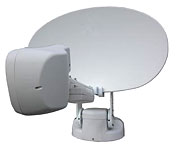BGNE
Belgrade, NE, USA
The USArray component of the NSF-funded EarthScope project ended its observational period in September 2021 and all remaining close-out tasks concluded in March 2022. Hundreds of seismic stations were transferred to other operators and continue to collect scientific observations. This USArray.org website is now in an archival state and will no longer be updated. To learn more about this project and the science it continues to enable, please view publications here: http://usarray.org/researchers/pubs and citations of the Transportable Array network DOI 10.7914/SN/TA.
To further advance geophysics support for the geophysics community, UNAVCO and IRIS are merging. The merged organization will be called EarthScope Consortium. As our science becomes more convergent, there is benefit to examining how we can support research and education as a single organization to conduct and advance cutting-edge geophysics. See our Joining Forces website for more information. The site earthscope.org will soon host the new EarthScope Consortium website.




For all but specific PI-driven experiments using some of Flexible Array equipment, all sensor signals digitized and time stamped at the sensor site are continuously transmitted in near real time to the Array Operations Facility.
The advantages of the digital USArray network are:
 The most preferable solution is portable VSAT modems. This system is a two-way satellite Internet "always-on" system consisting of a 0.5 m dish and a satellite modem that routes data from remote users through, for example, the GE-4 and Telstar 7 satellites to a downlink hub and then to the Internet. The system is targeted for home users with the expectation of low uplink and high downlink bandwidth requirements and requires an onsite computer and AC power (modem draws 30 W power). Two-way satellite-based Internet service offers download speeds close to those available via cable modem or DSL without the need for phone lines or an Internet Service Provider (ISP). The dish is connected to a satellite modem with a dedicated IP address using standard coaxial cables.
The most preferable solution is portable VSAT modems. This system is a two-way satellite Internet "always-on" system consisting of a 0.5 m dish and a satellite modem that routes data from remote users through, for example, the GE-4 and Telstar 7 satellites to a downlink hub and then to the Internet. The system is targeted for home users with the expectation of low uplink and high downlink bandwidth requirements and requires an onsite computer and AC power (modem draws 30 W power). Two-way satellite-based Internet service offers download speeds close to those available via cable modem or DSL without the need for phone lines or an Internet Service Provider (ISP). The dish is connected to a satellite modem with a dedicated IP address using standard coaxial cables.
Satellite coverage is provided throughout the conterminous United States and Alaska. Cost is estimated to be $3600 for the dish and modem, and $180/month for continuous operations. As market penetration spreads into the home consumer market, these prices will likely continue to fall.
Advantages of VSAT modems include rapid deployment and demobilization time. Disadvantages include high power consumption (15-20W), and requirements for the dish to have a clear view of the southern sky.
 This is a well-established telemetry technology that has been in use in several PASSCAL programs for many years. RF modems are serial radios that provide a digital carrier detect signal to denote a working link. RF links will likely be used in hostile terrain, or to carry the signals to a drop point that provides access to the Internet. While the technology is quite mature, the disadvantages are potentially lengthy deployment times, and higher failure rates than the consumer-based satellite technology. Furthermore, RF modems do not communicate using IP, so the signal must be converted to IP at the drop point.
This is a well-established telemetry technology that has been in use in several PASSCAL programs for many years. RF modems are serial radios that provide a digital carrier detect signal to denote a working link. RF links will likely be used in hostile terrain, or to carry the signals to a drop point that provides access to the Internet. While the technology is quite mature, the disadvantages are potentially lengthy deployment times, and higher failure rates than the consumer-based satellite technology. Furthermore, RF modems do not communicate using IP, so the signal must be converted to IP at the drop point.
Local Internet access may be available if the site is located on private property, near buildings, etc. This has the advantages of rapid deployment time, as well as providing power and possible security. However, these are often sites of considerable cultural noise.